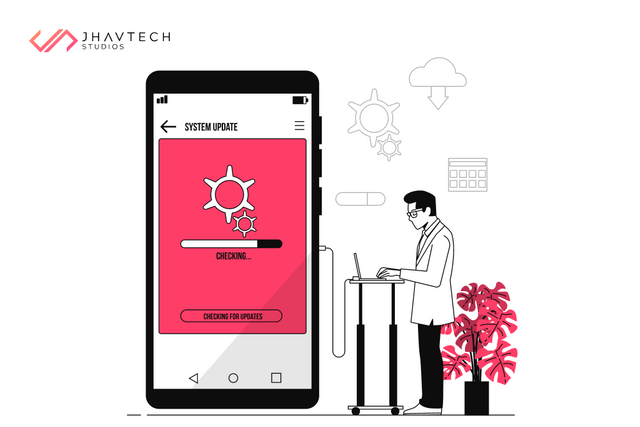Mastering Mobile App Development: 10 Crucial Insights
In today's dynamic digital realm, mobile app development is essential for businesses to stay competitive. Recent studies reveal that mobile apps drive over 90% of online traffic, emphasizing their significance. Whether you're a startup or an established firm, a compelling mobile app can significantly boost brand visibility and revenue.
With technology advancing rapidly, a robust strategy is crucial. This guide offers 10 indispensable tips for mastering mobile app development. From thorough market research to optimizing user experience, it provides insights into key aspects like defining target demographics and effective marketing.
Armed with these insights, you'll be well-equipped to succeed in a crowded market, attracting loyal users and maximizing returns. Whether you're new to app development or experienced, this article offers valuable insights to overcome challenges and thrive in the evolving mobile landscape.
Significance of Mobile App Development
In our current digital age, mobile app development is essential for business success. Enterprises ignoring app development risk losing a significant portion of their audience.
Mobile apps offer unique opportunities for personalized customer engagement, surpassing the capabilities of websites with features like push notifications and offline access. Businesses leveraging dedicated apps can enhance brand experiences and build strong customer relationships, crucial for staying competitive in modern markets.
To ensure success in mobile app development, defining clear objectives from the outset is crucial. Whether aiming to boost sales, improve customer service, or enhance brand recognition, setting goals guides development and ensures alignment with target audience preferences and needs.
Planning Your Mobile App Development Project
Before starting mobile app development, establish a clear plan. Start with comprehensive market research to understand your target audience, competitors, and industry trends. With over 2.9 million apps on Google Play and 2 million on the Apple App Store, identifying user preferences and market gaps is crucial.
Set clear, measurable goals such as increasing user engagement, driving revenue, or improving customer satisfaction. The mobile app market is expected to grow to $407.31 billion by 2028, emphasizing the importance of focused objectives.
Create a detailed project timeline and budget. Development can take 2-6 months and cost between $20,000 and $500,000. Careful planning ensures your app stays on track and within budget, from ideation to deployment.
Market Trends in Mobile App Development
Staying current with market trends and technologies is essential for creating a successful mobile app. The rapidly evolving mobile app landscape introduces new platforms, frameworks, and design patterns regularly. Staying informed ensures your app remains relevant and offers a seamless user experience.
Cross-Platform Development. A significant trend is the rise of cross-platform frameworks like React Native and Flutter. These allow developers to create apps for both iOS and Android using a single codebase, reducing development time and costs while ensuring a consistent user experience across devices.
App Performance and Optimization. With high user expectations for speed and responsiveness, optimizing app performance is crucial. Focus on minimizing load times, reducing battery consumption, and optimizing resource usage. This enhances user experience, improves app store rankings, and boosts user retention.
AI and Machine Learning Integration. The growing popularity of AI and machine learning opens new possibilities for mobile apps. Integrating these technologies can enable personalized recommendations, intelligent chatbots, and advanced data analytics, offering users a more tailored and intuitive experience.
Mobile App Development Best Practices
To ensure your mobile app development project's success, follow best practices and industry standards to create a high-quality app that meets user expectations.
Adopt Agile Methodology. Using agile methods like Scrum and Kanban enhances efficiency through iterative development, team collaboration, and continuous feedback, leading to faster feature delivery and better alignment with user needs.
Conduct User Testing: Regular user testing and feedback sessions help identify and address usability issues and bugs. Engaging real users provides insights into their preferences and pain points, enabling informed design decisions.
Maintain Clean Code: Write clean, modular code for long-term maintainability and scalability. Use meaningful variable names, comment your code, and write unit tests to ensure future developers can easily understand and modify the codebase.
Ensure Security: Protect your app and user data with secure authentication, encryption mechanisms, regular updates, and security audits to safeguard against vulnerabilities and data breaches.
Choosing the Right Mobile App Development Platform
Selecting the right mobile app development platform is crucial for your project's success. There are several options, each with its own advantages:
Native Development: Develop separate apps for iOS and Android using their respective languages and tools. This offers the best performance and access to platform-specific features but requires more time and resources.
Cross-Platform Development: Frameworks like React Native and Flutter allow building apps for multiple platforms with a single codebase, reducing development time and costs. However, this may sacrifice some platform-specific features and performance.
Hybrid Development: Use a single codebase to build apps running within a webview container. This combines web development benefits, such as code reusability and easy updates, with access to device features through plugins, but may not match native apps in performance and user experience.
When choosing a platform, consider your target audience, budget, timeline, and required features. Evaluate the pros and cons to select the best fit for your project's needs and goals.
User Interface and User Experience Design for Mobile Apps
The user interface (UI) and user experience (UX) design are crucial for your mobile app's success. A well-designed app is visually appealing and provides a seamless, intuitive user experience.
UI Design: Focus on simplicity, consistency, and clarity. Use a clean, minimalistic design, consistent colors, fonts, and icons to create a cohesive brand identity. Provide clear instructions and labels to guide users.
UX Design: Prioritize usability and ease of navigation with intuitive gestures like swiping, tapping, and scrolling. Organize content logically, making key features easily accessible.
Responsive Design: Ensure your app functions well on various screen sizes and resolutions, from smartphones to tablets. Test thoroughly on different devices to fix layout and usability issues.
User Feedback: Conduct user testing to gather feedback on usability and satisfaction. Use this feedback to make informed design improvements, meeting the needs of your target audience.
Testing and Debugging Your Mobile App
Testing and debugging are essential to ensure your app's functionality, performance, and stability.
Functional Testing. Verify all features and functionalities work as intended by testing various scenarios, inputs, and edge cases. Use automated tools like Appium and XCTest for consistent results across devices.
Performance Testing. Ensure your app performs well under different conditions, such as low network connectivity or high user load. Test load times, responsiveness, and resource usage with tools like JMeter and Firebase Test Lab.
Usability Testing. Evaluate the user experience by gathering feedback from real users. Observe their interactions to identify usability issues and make informed design improvements.
Compatibility Testing. Test your app on various devices, operating systems, and screen sizes to ensure compatibility and consistency. Conduct device-specific testing to identify platform-specific issues and ensure a seamless user experience across all devices.
Launching and Marketing Your Mobile App
Launching and marketing your mobile app is pivotal for its success and reaching your target audience. Here are essential tips for a successful app launch:
Develop a Comprehensive Marketing Strategy. Plan pre-launch, launch, and post-launch activities to build anticipation. Utilize social media, blogging, and email marketing to generate buzz. Create a dedicated website highlighting your app's features and benefits. Offer early access or exclusive promotions to attract early adopters.
Optimize Your App Store Presence. Improve visibility by conducting keyword research and integrating relevant keywords into your app's metadata. Use captivating screenshots and videos to showcase features and entice users.
Leverage Influencer Marketing and Partnerships. Collaborate with influencers or industry experts to expand your reach. Partner with complementary apps or businesses for cross-promotion to reach a wider audience.
Collect and Analyze User Feedback. Encourage user reviews and promptly address any concerns raised. Use analytics tools to track engagement, retention, and conversion rates, enabling data-driven decisions for optimizing user satisfaction and app performance.
Conclusion and Key Takeaways
Mobile app development is a multifaceted journey demanding meticulous planning, execution, and continuous refinement. By adhering to these 10 essential tips, you can adeptly navigate the intricacies of app development, ensuring your app's success.
From comprehensive market research to selecting the appropriate development platform and crafting an intuitive interface, each step is pivotal in delivering a top-notch app that resonates with users. Moreover, prioritizing testing, debugging, and marketing efforts lays a solid foundation for a successful app launch and audience engagement.
Remember, mobile app development is an iterative process. Continuously soliciting user feedback, scrutinizing performance metrics, and refining features are imperative to maintain relevance and competitiveness.
By heeding these insights and staying attuned to industry trends, you can develop a compelling mobile app that fuels business growth, amplifies brand presence, and delivers an unparalleled user experience. Embrace the journey ahead and leave an indelible mark on the mobile landscape.



